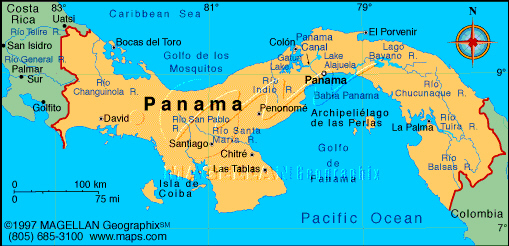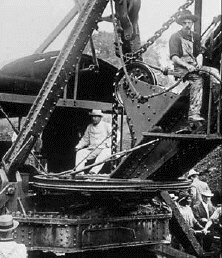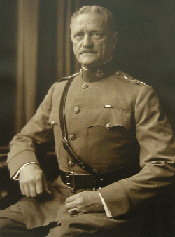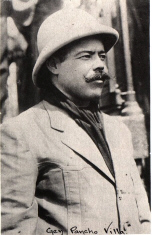Multiple Response
Identify one
or more choices that best complete the statement or answer the question.
|
|
|

Teddy Roosevelt
| Teddy Roosevelt and the World
The assassination of William McKinley in 1901 thrust Vice-President Theodore Roosevelt
into the role of a world leader . Roosevelt was unwilling to allow the imperial powers of Europe to
control the world's political and economic destiny without American participation. In 1905,
building on the Open Door notes to increase American influence in East Asia, Roosevelt mediated a
settlement in the war between Russia and Japan.
RUSSO-JAPANESE WAR
In 1904, tension between Japan and Russia over Korea
escalated to full-scale war. After the Boxer Rebellion, the Russians controlled Manchuria, the
northernmost province of China, and set their sights on Korea. The Japanese, who had taken Korea from
China in 1895 and set it up as an independent state, suggested that they and the Russians should
respect each other's spheres of influence. When Russia refused, Japan gave Russia "a last
and earnest warning" not to press the issue . In February 1904, the Japanese attacked the
Russian Pacific fleet. To everyone's surprise, Japan destroyed it and then destroyed the Russian
European fleet, which had been ordered to Asia to replace the Pacific fleet. Through a series of land
battles in China, Japan secured firm control over Korea as well as a foothold in
Manchuria.
| | |
|
|
|
1.
|
How did Theodore Roosevelt
become president in 1901?
|
|
|
2.
|
What was Roosevelt’s
attitude about America’s participation in world affairs?
|
|
|
3.
|
As a result of the Russo Japan
war (pick 3)
|
|
|
ROOSEVELT THE PEACEMAKER

Roosevelt brokers peace treaty between
Japan and Russia
| Japan's victories, however, cost a great deal of money, so the Japanese, hoping to
end the economic drain, asked Roosevelt to mediate the conflict . He agreed, and in 1905, Russian and
Japanese delegates convened in Portsmouth, New Hampshire.
The first meeting took place on the
presidential yacht. Roosevelt lead a charming way of' greeting people with a grasp of the hand,
a broad grin, and a hearty "Dee-lighted ." Soon the opposing delegates began to relax and
cordially shook hands .
The Japanese, who were in the driver's seat, wanted Sakhalin
Island, off the coast of' Siberia, and a large sum of money from Russia . Russia refused.
Roosevelt persuaded Japan to accept half the island and forgo the cash payment. In exchange, Russia
agreed to let Japan take over its interests in Manchuria and Korea. As a result of' his efforts
in negotiating the Treaty of Portsmouth, Roosevelt won the 1906 Nobel
Peace Prize | | |
|
|
|
4.
|
Which statements below are
true? (pick 2)
|
|
|
RELATIONS WITH JAPAN
As U.S . and Japanese interests expanded in East Asia,
the two nations continued their diplomatic talks. In later agreements, they pledged to respect each
other's possessions and interests in East Asia and the Pacific.
In 1907,
after building up the U.S . Navy, Roosevelt sent 16 gleaming white battleships on a world tour to
demonstrate U.S . naval power. The "Great White Fleet" was warmly received by the Japanese,
who were so impressed by the American navy that they began to build a bigger navy of their
own
| |
|
|
|
5.
|
How did Japan react to the
Great White Fleet in Asia?
|
|
|
6.
|
Why did TR send the Great White
Fleet on a tour around the world?
|
|
|
PANAMA CANAL

Engineers identified two possible routes for the proposed canal . through Nicaragua,
posed fewer obstacles because much of it crossed a lake . The other, through Panama (then a
province of Colombia), was shorter but was beset with mountains and swamps.
The Senate
approved the route through Panama, and the United States began negotiations over Panama with
Colombia. When these negotiations broke down, Bunau- Varilla helped organize a Panamanian rebellion
against Colombia. Nearly a dozen U.S . warships were present as Panama declared its independence .
The United States negotiated a treaty that guaranteed Panama's independence and at the same time
gave the United States perpetual control of a ten-mile-wide canal
zone.
| |
|
|
|
7.
|
Why did the U.S. want to build
a canal through Panama?
|
|
|
8.
|
At the time, Panama was part of
Columbia. When Columbia refused to allow the U.S. to build the canal, what did the U.S.
do?
|
|
|
9.
|
What were Admiral Mahan’s
four recommendations for the U.S. to become a world power? (pick 4)
|
|
|

TR sits on canal shovel | CONSTRUCTING
THE CANAL
Construction of the Panama Canal ranks as one of the world's greatest
engineering feats. Builders fought diseases-such as yellow fever and bubonic plague-and soft volcanic
soil that was difficult to remove . Work began in 1904 with the clearing of brush and draining of
swamps. By 1913, the height of the construction, more than 43,400 workers were employed. Some had
come from Italy and Spain; three-quarters were blacks from the British West Indies . More than 5,600
workers on the canal died from accidents or disease. The total cost to the United States was about
$380 million . On August 15, 1914, the canal opened for business, and more than 1,000 merchant ships
passed through during its first year. U.S.-Latin American relations, however, had been damaged by the
takeover of Panama. The resulting ill will lasted for decades, despite Congress's paying
Colombia $25 million in 1921 to compensate the country for its lost
territory. | | |
|
|
|
10.
|
Which statement is
true?
|
|
|
 TR Speak Softly and Carry a Big Stick TR Speak Softly and Carry a Big Stick
THE ROOSEVELT COROLLARY
Financial
factors drew the United States further into Latin American affairs . In the late 19th century, many
Latin American nations had borrowed huge stuns from European banks to build railroads and develop
industries. Roosevelt feared that if these nations defaulted on their loans, Europeans might
intervene in the Western Hemisphere . He was determined to make the United States the predominant
power in the Caribbean and Central America.
Roosevelt based his Latin American policy on a
West African proverb that said, "Speak softly and carry a big stick; you will go far."
|
In his December 1904 message to Congress, Roosevelt defined his "big
stick" diplomacy, the Roosevelt Corollary to the Monroe Doctrine . He not only argued that
European powers must not intervene in the Western Hemisphere but warned that disorder in Latin
America might "force the United States . . . to the exercise of an international police
power" in order to protect U.S. economic interests.
During the next decade, the United
States exercised its police power on several occasions. For example, when a 1911 rebellion in
Nicaragua left the nation near bankruptcy, President William H. Taft, Roosevelt's successor,
arranged for American bankers to loan Nicaragua enough money to pay its debts . In return, the
bankers were given the right to recover their money by collecting Nicaragua's customs duties .
The U.S . bankers also gained control of Nicaragua's state-owned railroad system and its
national bank. A revolt broke out so the U.S. sent in troops. The revolt was put down, but some
marine detachments remained in the country until 1933.
The Taft administration followed the
policy of using the U.S. government to guarantee loans made to foreign countries by American business
people . This policy was called dollar diplomacy by its critics and was often used to justify
keeping European powers out of the Caribbean. | | |
|
|
|
11.
|
What motivated the U.S. to get
involved in Latin American affairs?
|
|
|
12.
|
What is the Roosevelt Corollary
(addition) to the Monroe Doctrine?
|
|
|
13.
|
America’s main
imperialist interest in Latin America was
|
|
|
Woodrow Wilson's Missionary Diplomacy
 Woodrow
Wilson Woodrow
Wilson
The original Monroe Doctrine, issued by President James Monroe in 1823, warned
other nations against expanding their influence in Latin America. The Roosevelt Corollary asserted
that the United States had a right to exercise international police power in the Western
Hemisphere. In 1913, President Woodrow Wilson gave the Monroe Doctrine a moral tone
.
According to Wilson's "missionary diplomacy," the United States had a moral
responsibility to deny recognition to any Latin American government it viewed as oppressive,
undemocratic, or hostile to U.S. interests. Until that time, the United States had recognized any
government that controlled a nation, regardless of its policies or how it had come to power.
Wilson's policy pressured nations in the Western Hemisphere to establish democratic
governments. The Mexican Revolution put Wilson's policy to the test almost
immediately.
| |
|
|
|
14.
|
Woodrow Wilson was mainly
concerned that the governments of Latin America were
|
|
|
15.
|
Who was Woodrow
Wilson?
|
|
|
16.
|
What was the Monroe
Doctrine?
|
|
|
THE MEXICAN REVOLUTION
Between 1876 and 1911, President Porfirio Diaz dominated Mexico as a military
dictator. He suppressed internal opposition and welcomed foreign investment. Americans had
invested heavily in Mexican oil wells, mines, railroads, and ranches . Wealthy landowners, the
church, and the military supported Diaz, but peasants and workers finally revolted against him in
1910. In 1911, he fled Mexico City as it was occupied by revolutionaries.
The leader of the
rebellion, Francisco Madero, became president of Mexico in 1911. A wealthy landowner and
reformer, he proved unable to satisfy the conflicting demands of landowners, peasants, factory
workers, and the urban middle class. After two years, General Victoriano Huerta took over the
government and executed Madero . Americans with business interests in Mexico urged Wilson to
recognize the Huerta government . But Wilson was committed to his policy of missionary diplomacy, and
he refused to recognize "a government of butchers ."
Wilson adopted a plan of
"watchful waiting," looking for an opportunity to act against Huerta . The opportunity
carne in April 1914, when Mexican officials arrested a small group of American sailors in Tampico, on
Mexico's eastern shore. The Mexicans quickly released them and apologized, but Wilson used the
incident as an excuse to intervene in Mexico and ordered U.S. marines to occupy Veracruz .
Nineteen Americans and at least 200 Mexicans died during the invasion .
The incident brought
the United States and Mexico close to war. Argentina, Brazil, and Chile stepped in to mediate the
conflict. They proposed that Huerta step down and that U.S . troops withdraw without paying Mexico
for damages. Mexico rejected the plan, and Wilson refused to recognize a government that had come to
power as a result of violence . The Huerta regime soon collapsed, however, and Venustiano Carranza, a
nationalist leader, became president in 1915. Wilson withdrew the troops and formally recognized the
Carranza government .
| |
|
|
|
17.
|
Why did Wilson refuse to
recognize the Huerta government.
|
|
|
18.
|
When Mexico arrested a group of
American sailors, what did President Wilson do?
|
|
|
19.
|
Which of the following
statements are true? (Pick 2)
|
|
|

General
Pershing | 
Pancho
Villa | 
Emillio
Zapata | PERSHING PURSUES VILLA
Turmoil in Mexico
continued, as Emiliano Zapata and Francisco "Pancho" Villa led revolts
against Carranza . Zapata was an Indian dedicated to land reform . Villa was an anti-Carranza
revolutionary. Angry over Wilson's recognition of Carranza's government, Villa threatened
reprisals against the United States . In January 1916, Carranza invited a group of American engineers
to operate abandoned mines in northern Mexico . Before they reached the mines, however, Villa's
men took the Americans off a train and shot them. Two months later, some of Villa's followers
raided Columbus, New Mexico, and murdered 17 Americans . Americans held Villa
responsible.
Carranza reluctantly agreed to let Wilson send U.S. troops into Mexico to try to
capture Villa. General John J. Pershing led an expeditionary force of about 15,000 soldiers in
pursuit of Villa. For almost a year, Villa eluded Pershing's forces . Wilson then called out
150,000 National Guardsmen and stationed them along the Mexican border. In the meantime, the Mexicans
grew angrier over the U.S. invasion of their land. In June 1916, U.S . troops clashed with
Carranza's army, resulting in deaths on both sides . Carranza demanded the withdrawal of U.S.
troops, but Wilson refused
Pershing's pursuit of Villa intensified anti-American feelings
in Mexico . In 1917, as the United States faced possible war in Europe, Wilson withdrew U.S . troops
. Later that year, Mexico adopted a constitution that gave the government control of the
nation's oil and mineral resources and placed strict regulations on foreign investors
.
| | | |
|
|
|
20.
|
Who gave the U.S. permission to
enter Mexico to go after Pancho Villa?
|
|
|
21.
|
Which American general led U.S.
troops into Mexico to go after Pancho Villa?
|
|
|
22.
|
Why did U.S. troops enter
Mexico?
|
|
|
U.S. intervention in Mexican affairs
provided a clear model of American imperialist attitudes in the early years of the 20th century.
Americans believed in the superiority of their political and economic institutions (democracy and
capitalism), and attempted to extend the reach of these economic and political systems, even if it
had to use the U.S. military to do so . Yet, the U.S. did not annex territory, as the Europeans and
Japanese had done .
Nevertheless, the United States pursued and achieved several
foreign policy goals in the early 20th century.
First, it expanded its access to foreign markets in order
to ensure the continued growth of the domestic economy.
Second, the United States built a modern
navy to protect its interests abroad.
Third, the United States exercised its international police
power to ensure American dominance in Latin America.
For better or worse, imperialism had drawn the United
States deeper into world affairs. At the same time, imperialism pushed Europeans toward the most
destructive war they had yet experienced- a war the United States could not
avoid. | |
|
|
|
23.
|
What were the three policy
goals of U.S. imperialism in the early 20th Century? (pick 3)
|
|
|
24.
|
The U.S. is called an
imperialist country because it believed its economic and political systems were superior. What were
those two ideas? (Pick 2)
|